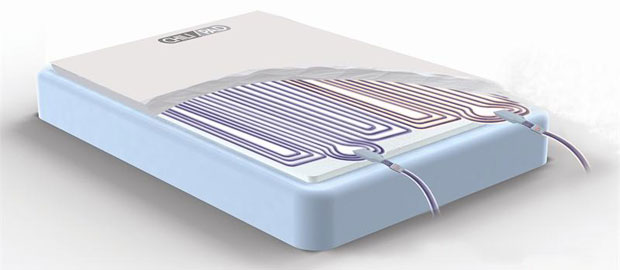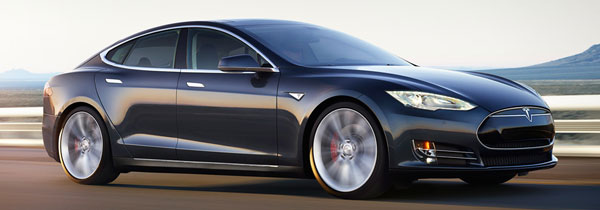In watching the illicit attempts of dealers and U.S. auto companies to try to kill Tesla, I have to think they are all wrongheaded. I don’t drive a Tesla, but this kind of thing makes me really mad because it is so incredibly stupid.
Tesla is as much an idea as it is a company — and an idea that should be flowing through the car industry anyway, because the world is changing. The way we buy most things is changing, and firms that try to fight waves like this typically find themselves out of business. I don’t think the U.S. government will bail out the auto industry a second time.
This is my not-too-subtle way of saying that the market will move to Tesla’s model — the question is whether U.S. car companies will ride this wave or be buried by it.
I’ll focus on change this week and close with one of my very favorite marriage-saving products : the ChiliPad.
Change Is in the Air
All markets are in the process of changing, from how we pay for things — which largely had shifted from cash to credit and debit cards and now is shifting again to near field communications services like Apple Pay — to how we buy them, shifting from stores like Sears to online retailers like Amazon.
It certainly could be argued that banks should be leading the charge to a different and far-safer payment method rather than a technology company, and that catalog companies like Sears should have done the online thing right before Amazon figured it out, but folks just don’t like to learn to do things differently. You can almost hear the old codger executive say, “If it was good enough for my pappy and grandpappy, it is good enough for me,” a few months before a firm goes out of business.
We exist in a world of change, and successful companies either learn to change with the world, or they receive the pleasures of early retirement or unplanned unemployment, and the U.S. auto industry has just missed that direr outcome several times in the last decade. You’d think auto companies would learn, but apparently they don’t want to.
The Tesla Model
Tesla isn’t just about the car, which is cool — it is as much about the model, which is based solidly on how Apple brings things to market. The reason Tesla can do this is that the car, while looking a lot like other cars, is very different underneath. It has few moving parts, being mostly solid state, and the keystone feature is a large screen tablet-like interface that sits between the seats.
Because it is solid state, it doesn’t need service often — and because it is modular, it often can be repaired easily in the field or, like a laptop or tablet, sent to a centralized service facility for repair. Rather than you driving to a dealer to wait in line and waste half a day, Tesla drives a loaner to you and then swaps it back. (It will sell you the loaner for a slight upcharge if you’d rather keep it).
Even updates don’t require a trip to a service facility because, like wireless devices, the car is always connected and tied to a cloud service that handles that part. It isn’t just different — it is like most of the devices that currently are causing upheaval in the technology market. That means this is a trend in much the same way as moving from horses to cars, or gas to electricity.
The Tesla is a big electronic appliance. It is solid state and very reliable, and much of its value actually comes from the cloud services it is connected to and the apps it runs. If Apple were to make a car, it would be a Tesla.
As a result, its move to self-driving appears far more quickly than similar moves from other companies, and given that self-driving cars have to be connected not only to some kind of centralized service but also to each other, the overall solution looks more like something you’d see in a high-technology product than in a typical car.
The thing is, to compete, all cars will need to evolve to become more like Tesla’s, and dealerships simply won’t be needed unless the industry embraces and changes the model.
Test drives likely will ensure that some kind of storefront will be needed. I expect we’ll evolve away from brand-only stores to multibrand stores, with manufacturers sharing a footprint to keep costs down in low-volume regions. However, there is no doubt in my mind that this is the future, because cars have to become more like the Tesla, and the Tesla car forces a very different sales and service model.
Tesla’s Problem Is the US Car Industry’s Problem
Tesla’s problem isn’t that its model doesn’t work. It works very well, which is why we are up to our armpits in expensive Tesla cars where I live. The problem is that there is an impressive number of politicians who own dealerships, and they don’t want to lose their businesses.
I get that, but using political power to lock out Tesla is not just wrongheaded — it should be illegal. Change is coming, regardless. With the latest law being passed in Michigan, Tesla appears banned from the Detroit auto show, which is just nuts — because, gee I don’t know, it basically makes the whole U.S. auto industry look stupidly blind.
Improving on Tesla
Now the Tesla S is a modular car, and you could certainly see how a dealership model could be made to work at scale. You build the basic cars, but given they are modular, the dealer then modifies them to order, swapping in and out the components, and the software can be smart enough to automatically scan and enable anything the system has to be connected.
Buyers can come back for upgrades as needed. As a buyer, you’d never again have to regret not getting something up front, and dealers could have upgrade specials, bringing you back in regularly to buy more stuff. That would help even out their revenue stream and offset their loss of regular service revenue as cars become more solid state.
They even could use wraps to change the color of cars, which would be designed to be wrapped more easily. Want a different color? For a relatively low fee, you can get that, stripes, or even a picture of your puppy on the vehicle.
Rather than fighting Tesla while the auto industry gets buried in recalls, why not learn from it and create something better that embraces the dealer model? Rather than denying choice, provide a better one. The outcome should be far more survivable, because the market is moving there, whether we like it or not. Self-driving cars, which basically will be rolling supercomputers, will require this change.
Wrapping Up: Pivotal Moments
In every industry, there are pivotal moments when influential people decide to go one way or another, and the industry changes forever. I think the auto industry has reached the moment when it can decide either to embrace the future and become something better, or fight the future and be crushed by it. I’m afraid the industry is making the wrong choice, and I doubt it will get another government bailout.
You don’t support Tesla just because you like the car, you support it because it represents the future of automobiles. If we want the auto industry to survive in the U.S., we need to be on that wagon — not under it.
Product of the Week: The New ChiliPad

The ChiliPad is one of my favorite products. Like most couples, my wife and I have different sleep comfort zones. She likes to be unreasonably hot at night, and I like a much more reasonable cool temperature. If she were writing this, she’d say she wants to be cozy warm, while her insane husband thinks he’s the abominable snow man.
The reason I’m fascinated with the ChiliPad is that I’ve always been hot at night and often wished someone would apply the technology that is used in race car drivers’ clothing and spacesuits to regulate temperature with circulated cool water. Water is a great conductor of heat (which is why most cars and motorcycles use it for cooling) and it doesn’t generate magnetic fields that many think are unhealthy, like electric blankets and heating pads do.

On a king- or queen-sized unit, the ChiliPad either comes in a mattress pad or you get it built into a mattress. You have two zones — one for each sleeper — and either side can be heated to more than 110 degrees or cooled to the 40s as needed.
There were a couple of problems with the old product, in that the fans were noticeable and the remote control really didn’t work particularly well. Still, I loved it. With the new model, the fans are quieter, and the remote actually talks to the heating and chilling units, so you can tell it is working. Since this one product is the reason I’m not sleeping by myself these days, the new ChiliPad is my product of the week.
























































Let us not forget when General Motors purportedly killed off the trolley and rail systems. I’m not a fan of Tesla for reasons, but I don’t think the Detroit ham-fisted method works well under any circumstances. No, I don’t see Detroit going out of business over this, but the protection they are insisting on for their distribution is questionable. I AM in a business that doesn’t protect anything and I AM watching products that I offer being sold at prices below what I AM paying. I understand the structure and I have to live with it or else I need to find other widgets to sell.
It wasn’t GM that killed off the street trollies, it was Firestone.